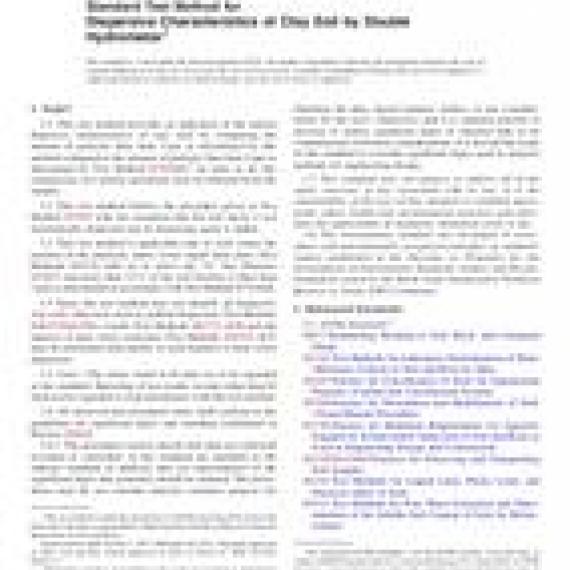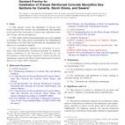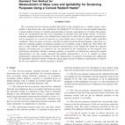No products
ASTM D4221-17
ASTM D4221-17 Standard Test Method for Dispersive Characteristics of Clay Soil by Double Hydrometer
standard by ASTM International, 07/01/2017
Full Description
1.1This test method provides an indication of the natural dispersive characteristics of clay soils by comparing the amount of particles finer than 2-m as determined by this method compared to the amount of particles finer than 2-m as determined by Test Method D7928 (1).2 In order to do this comparison, two similar specimens must be obtained from the sample.
1.2This test method follows the procedure given in Test Method D7928 with the exception that the soil slurry is not mechanically dispersed and no dispersing agent is added.
1.3This test method is applicable only to soils where the position of the plasticity index versus liquid limit plots (Test Methods D4318) falls on or above the A line (Practice D2487) and more than 12% of the soil fraction is finer than 2-m as determined in accordance with Test Method D7928 (2).
1.4Since this test method may not identify all dispersive clay soils, other tests such as, pinhole dispersion (Test Methods D4647/D4647M), crumb (Test Methods D6572) (3-5) and the analysis of pore water extraction (Test Methods D4542) (4-7) may be performed individually or used together to help verify dispersion.
1.5Units-The values stated in SI units are to be regarded as the standard. Reporting of test results in units other than SI shall not be regarded as nonconformance with this test method.
1.6All observed and calculated values shall conform to the guidelines for significant digits and rounding established in Practice D6026.
1.6.1The procedures used to specify how data are collected/recorded or calculated, in this standard are regarded as the industry standard. In addition, they are representative of the significant digits that generally should be retained. The procedures used do not consider material variation, purpose for obtaining the data, special purpose studies, or any considerations for the user's objectives; and it is common practice to increase or reduce significant digits of reported data to be commensurate with these considerations. It is beyond the scope of this standard to consider significant digits used in analysis methods for engineering design.
1.7This standard does not purport to address all of the safety concerns, if any, associated with its use. It is the responsibility of the user of this standard to establish appropriate safety, health and environmental practices and determine the applicability of regulatory limitations prior to use.
1.8This international standard was developed in accordance with internationally recognized principles on standardization established in the Decision on Principles for the Development of International Standards, Guides and Recommendations issued by the World Trade Organization Technical Barriers to Trade (TBT) Committee.


































